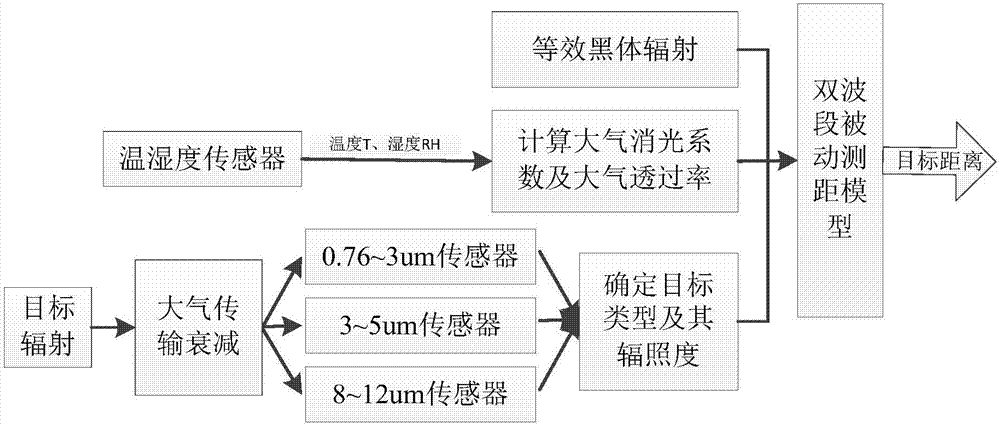Adaptive infrared dual-band passive ranging method
A passive ranging, dual-band technology, used in radio wave measurement systems, measurement devices, electromagnetic wave re-radiation and other directions, can solve problems such as poor real-time performance, limited detection accuracy, and large system resource occupation, achieving good adaptability and reliability. Measurement accuracy, high measurability and resolution, the effect of expanding the scope of application
- Summary
- Abstract
- Description
- Claims
- Application Information
AI Technical Summary
Problems solved by technology
Method used
Image
Examples
Embodiment Construction
[0024] Below in conjunction with accompanying drawing and embodiment, the present invention is described in further detail:
[0025] refer to figure 1 , the implementation steps of the present invention are as follows:
[0026] Step 1: Preliminary assessment of the location and type of the measured target.
[0027] Targets to be measured include high-temperature air targets and normal-temperature or low-temperature ground targets, such as airplanes and missiles, which are high-temperature air targets, and tanks, armored vehicles, etc., which are normal-temperature or low-temperature ground targets.
[0028] According to actual needs, select the target to be measured, and carry out preliminary assessment to the position of the target to be measured, assuming in this embodiment that the target to be measured is a jet aircraft of a certain type in the air, and the position and type of the target to be tested are initially evaluated The process is as follows:
[0029] 1a) Use t...
PUM
 Login to View More
Login to View More Abstract
Description
Claims
Application Information
 Login to View More
Login to View More - Generate Ideas
- Intellectual Property
- Life Sciences
- Materials
- Tech Scout
- Unparalleled Data Quality
- Higher Quality Content
- 60% Fewer Hallucinations
Browse by: Latest US Patents, China's latest patents, Technical Efficacy Thesaurus, Application Domain, Technology Topic, Popular Technical Reports.
© 2025 PatSnap. All rights reserved.Legal|Privacy policy|Modern Slavery Act Transparency Statement|Sitemap|About US| Contact US: help@patsnap.com



